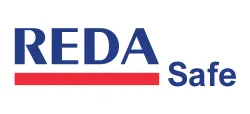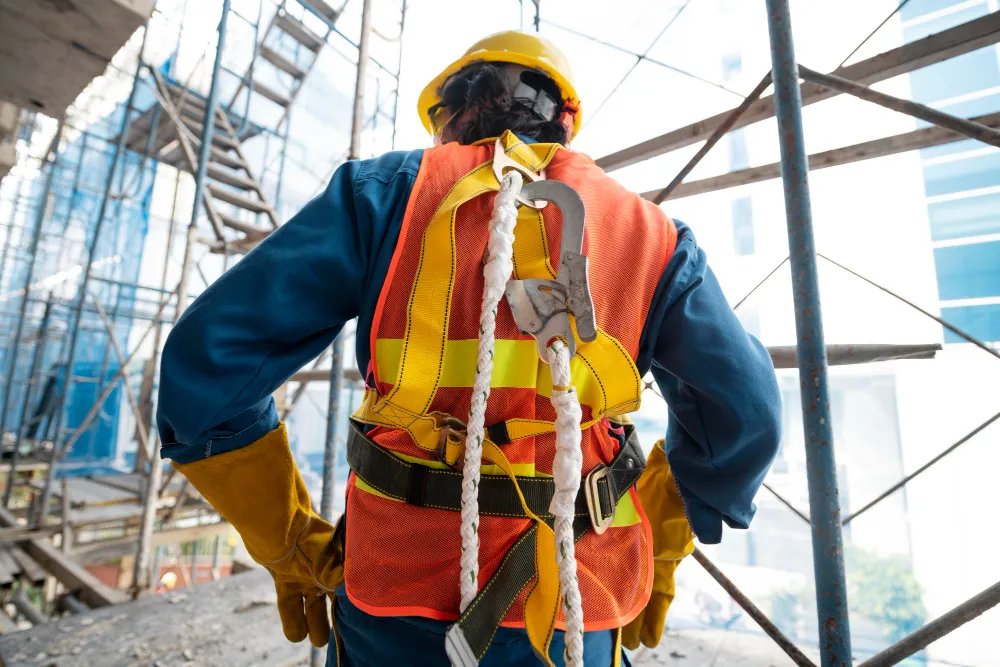Introduction
Fall protection, essential for worker safety, often sparks debate on construction sites. Looking back, we imagine workers fearlessly navigating high-rise structures without safety gear. This nostalgic view contrasts sharply with the harsh reality. Historical data reveals frequent falls and fatalities among those early workers. Fast forward to today, and the situation remains concerning. In 2020, falls accounted for over a third of U.S. construction deaths (351 out of 1008), despite strict safety regulations.
The broader picture is even more alarming. Including all sectors, fall-related fatalities in the U.S. reached 42,114 in 2020. Many victims lacked proper fall protection or the knowledge to use it. These figures underscore the critical need for continuous education about fall hazards at work. Our first step is debunking five common myths about the life-saving equipment used for working at heights.
Fall Protection Equipment: A Safety Necessity, Not a Hazard
While wearing fall protection gear might feel cumbersome, it’s significantly safer than not using it. The slight inconvenience of putting on this equipment is a small price to pay for avoiding serious risks associated with high-altitude work. Choosing the right gear, tailored to the work's nature and environment, can reduce discomfort without sacrificing safety.
Concerns about injuries like suspension trauma are valid, but a comprehensive fall protection plan addresses these. Such plans include not just wearing the gear but also quick rescue strategies and trained rescue personnel. The risks from suspension in a harness are minimal compared to the dangers of a substantial fall. Prioritizing safety, therefore, means properly using and understanding fall protection equipment.
Fall Protection: Necessary at Lower Heights Too
The idea that fall protection is only needed for extreme heights is a misconception. In many industries, the threshold for requiring fall protection is just 4 to 6 feet. This might seem low, but statistics justify it. In the U.S., there were 136 deaths and over 127,000 injuries in 2020 from falls at this level. A fall from even a modest height can be dangerous, especially if hazards like chemicals or sharp objects are present below. OSHA's regulations reflect this reality, mandating fall protection even at lower elevations when there's a risk of falling onto something hazardous.
Clarifying the "6 Foot" Rule in Fall Protection
A common misunderstanding in workplace safety is the so-called "6 Foot Rule," which suggests that maintaining a distance of six feet from an edge eliminates the need for fall protection. This belief is not supported by OSHA regulations. Neither the general industry standards (OSHA CFR 1910) nor the construction industry guidelines (OSHA CFR 1926) recognize six feet as a safe, exempt distance. In fact, OSHA's stance is quite clear: no distance from an unprotected side or edge is considered safe enough to forgo fall protection.
This misconception may stem from a misinterpretation of the regulations. There is an interpretation from 1996 that introduces the concept of a 'safe working distance' for specific situations. It applies to trained workers on a low-slope roof (with less than a 10-degree incline). These workers are permitted to work without fall protection if they maintain a distance of 50 to 100 feet from the unprotected edge. However, this is a very specific scenario and not a general rule. Importantly, even this allowance doesn't fully comply with OSHA's fall protection requirements. It's considered a de minimis condition, which means it's not technically in line with the standards, but it's also not a violation that would lead to a citation.
This nuanced understanding underscores the importance of not relying on oversimplified safety rules. Every worksite and situation requires a thorough evaluation of risks and appropriate safety measures. The key takeaway is that distance alone is not a reliable indicator of safety from fall hazards. Employers and workers must prioritize comprehensive fall protection strategies, including proper equipment, training, and adherence to the latest safety regulations, regardless of the distance from an edge. Neglecting these aspects can lead to serious accidents and fatalities, even in situations that might seem safe at a glance. Therefore, it's vital to dispel this and other fall protection myths to ensure a safer working environment for everyone involved.
Fall Protection and the Role of Parapets and Guardrails
The belief that a parapet or makeshift barrier is sufficient for fall protection is a misconception. True guardrails must adhere to strict criteria in strength, height, and design to be effective. They must withstand a force of 200 pounds at the top and maintain a minimum height of 39 inches without yielding. Continuity of the guardrail is essential, with the only exceptions being entry points and stairways, which should have their own protective measures.
In some cases, a rope can function as a warning line but only under specific conditions. This includes placement at a distance of 15 feet from the edge (or 6 feet for general industry workplaces), a minimum breaking strength of 500 pounds, and clear visibility with flags placed at intervals of 6 feet. Additionally, the stanchions supporting the warning line must be robust, capable of withstanding at least 16 pounds of force without toppling.
These details emphasize that effective fall protection is more than just setting up basic barriers. It involves careful consideration of the materials, design, and placement of safety measures to ensure they provide genuine protection against fall hazards. Proper implementation and adherence to safety standards are crucial in creating a safe work environment, especially where the risk of falls is high.
Constant Vigilance with Fall Protection Gear
Wearing a harness and being secured doesn’t mean you can stop worrying about fall protection. It requires thoughtful setup and ongoing vigilance. Before work, check that anchors are strong enough and equipment is well-maintained and properly worn. Ensure there’s enough clearance for the fall arrest system to work effectively. Stay aware of your lanyard's location and potential hazards that could damage it. Overextending from the anchor point can lead to dangerous swings and potential injuries, even with self-retracting lanyards. Falling, under any circumstance, is risky; thus, maintaining constant awareness and using multiple safety measures is crucial for preventing accidents.
Conclusion
Navigating fall protection requirements can be a complex task due to the variety of rules across different industries, regions, and worksites. With so many opinions and interpretations based on partially remembered guidelines and traditional practices, it's crucial to approach fall protection with clarity and precision. Developing site-specific fall protection strategies, rooted in up-to-date and universally recognized safety standards, is vital. This ensures not only adherence to legal requirements but also maximizes safety for workers exposed to fall hazards. Continual education and staying informed about evolving standards are key components in this process, helping to dispel myths and ensure a safe working environment for all.

